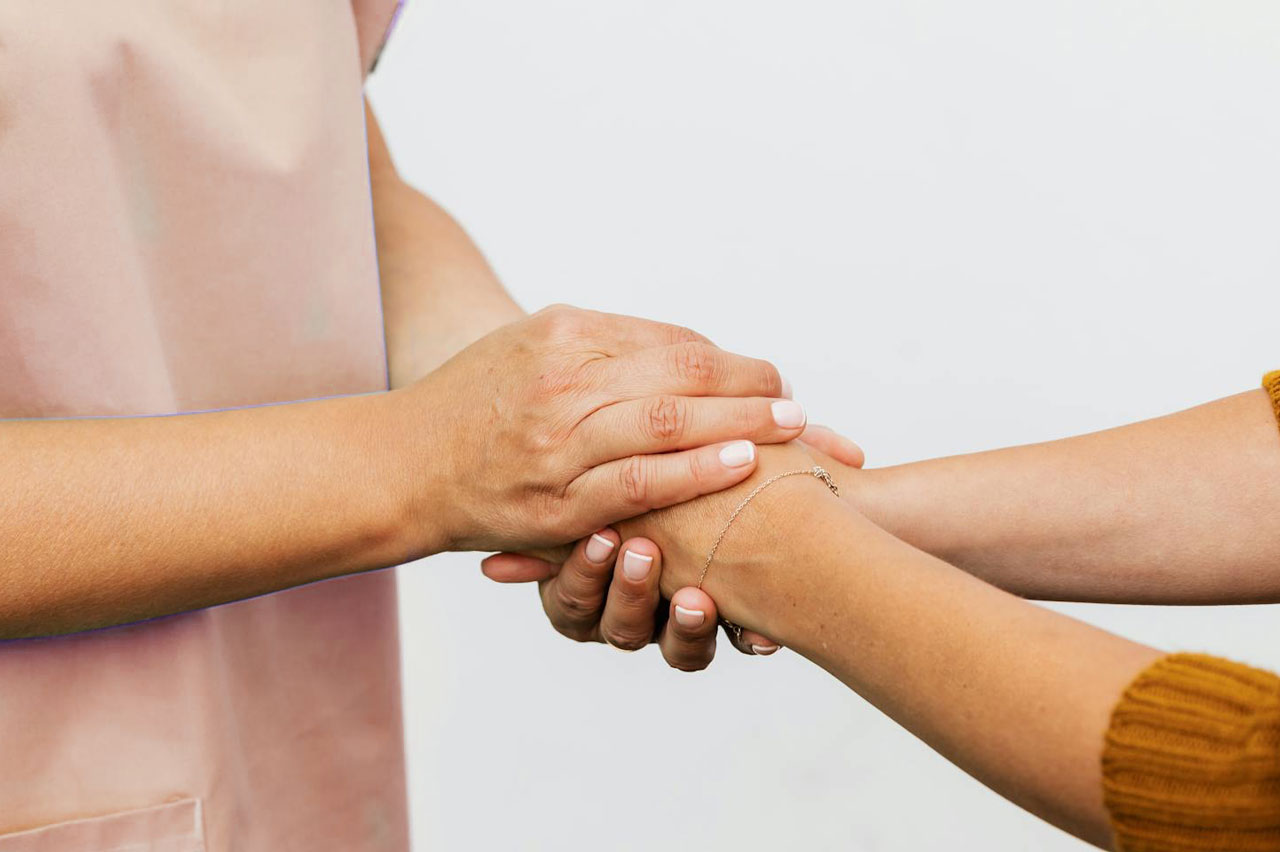omnisearch_title
Self-Regulation Is a Myth Co-Regulation Matters
Self-regulation is a word you hear a lot these days. Everyone talks about the importance of teaching kids and adults to self-regulate their emotions, their nervous system, their impulses. But here’s the truth: pure self-regulation, by itself, is a dream. It’s almost impossible to fully regulate our nervous system without the safety and support of co-regulation the relational dance with another human being.
In this article, I want to explore why self-regulation alone is not enough, especially from a trauma-informed perspective grounded in Somatic Experiencing (SE). I’ll also share how co-regulation is essential for healthy emotional development in children and how adults can use co-regulation to heal and strengthen their nervous system.
What Is Self-Regulation? And Why It’s a Dream
Self-regulation refers to the ability to manage one’s emotions, impulses, and physiological states in ways that allow us to stay calm, focused, and balanced. We often imagine it as a personal skill, something we build inside us like a muscle an internal thermostat that keeps our feelings and reactions “just right.”
But here’s the challenge: humans are wired for connection. Our nervous system evolved not in isolation, but in relationship with others. For babies, toddlers, and children, the ability to self-regulate is deeply dependent on the co-regulation they receive from caregivers. Adults, too, rely on relational cues and support, even if unconsciously.
From a trauma-informed SE perspective, self-regulation is never a solo journey. When we try to regulate alone, especially if our nervous system is dysregulated or triggered by past trauma, we often struggle. We might feel stuck in anxiety, overwhelm, or numbness. The nervous system’s natural rhythm is out of sync.
What Is Co-Regulation?
Co-regulation is the process where two or more people interact in a way that helps balance each other’s nervous systems. It is an unconscious, relational dance where we attune to another’s emotional state and, through connection words, tone of voice, eye contact, touch, presence we help bring each other back into regulation.
Think about a baby crying. The infant cannot calm down alone. It is the caregiver’s calm voice, steady breathing, gentle touch, and attentive presence that soothes the baby’s nervous system. This attunement teaches the child how to feel safe and eventually develop their own self-regulation skills.
Co-regulation is the foundation for healthy emotional development. It creates a sense of safety and trust in the body and the environment. When the nervous system feels safe through connection, it can settle, repair, and grow stronger.
Why Trauma Makes Self-Regulation Harder
Trauma lives in the body and nervous system. It creates patterns of hypervigilance, dissociation, or shut down. These patterns are survival strategies hardwired responses from our past when we were not safe. In trauma, the nervous system’s capacity to regulate on its own is diminished.
From the SE perspective, trauma blocks the natural flow of energy and regulation in the nervous system. We become stuck in fight, flight, or freeze states. Trying to “just calm down” or “control your emotions” feels impossible or exhausting because the nervous system is overwhelmed.
In this context, self-regulation as a solitary effort is not just unrealistic it can be retraumatizing. We need co-regulation to come back from those stuck states. A safe, attuned presence helps the nervous system complete unfinished survival responses and restore balance.
Co-Regulation and Children’s Emotional Development
For children, co-regulation is not optional it’s essential. Babies and toddlers rely completely on their caregivers to modulate their nervous system. Through responsive caregiving soft touch, eye contact, tone of voice the child learns that the world is safe.
When parents or caregivers are attuned and present, children’s stress responses calm down naturally. Over time, children internalize these regulatory experiences and develop their own capacity to self-regulate. But without co-regulation, children are more vulnerable to anxiety, behavioral difficulties, and emotional dysregulation.
This is why trauma-informed parenting and caregiving focus so much on co-regulation. It’s not about forcing children to “calm down” but about being with them in their feelings and helping their nervous system come back into balance.
How Adults Can Use Co-Regulation in Their Own Healing
Adults, too, can benefit deeply from co-regulation. Whether it’s a therapist, a trusted friend, a partner, or a group, relational safety is crucial to nervous system regulation.
In Somatic Experiencing sessions, we create a space of co-regulation where the client’s nervous system can safely discharge trapped energy and restore its natural rhythms. This relational safety allows for trauma to be processed gently and for resilience to grow.
In everyday life, co-regulation can be practiced by:
- Slowing down your breathing together with someone else
- Engaging in calm, supportive conversation
- Sharing presence without judgment
- Gentle touch or holding hands (if appropriate)
- Mindful eye contact and attuned listening
These simple but profound acts help the nervous system shift from survival mode into regulation mode.
Why We Need to Shift Our Thinking About Self-Regulation
The idea that we should be able to self-regulate perfectly and all the time is a myth that sets many people up for failure and shame. Especially for those with trauma histories, this myth disconnects us from our basic human need for connection.
Co-regulation reminds us that we are wired for relationship. Regulation happens in the dance between self and other, not in isolation. When we embrace this truth, we open the door to greater compassion for ourselves and others.
If you’re a parent, caregiver, or somatic practitioner, honoring co-regulation means:
- Creating safe, attuned relationships
- Offering presence without trying to “fix”
- Understanding nervous system responses as normal survival strategies
- Supporting regulation through connection, not control
Challenge of the Week:
Take a moment to slow down and tune in.
- Share 5 Minutes of Presence: Sit quietly with someone you trust—no words, just shared space. Notice how your body responds.
- Spot a Connection Moment: At the end of the day, ask yourself: “When did I feel most connected today?” One breath, one smile—write it down.
- Be a Regulating Presence: With a child or loved one, don’t fix—just stay present. Slow your breath. Let your calm support their nervous system.
I’d love to hear how these lands for you. You can share your reflections with me and send a message if something moved inside you.
With love and presence,


